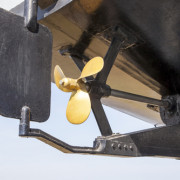Understanding Thread Fit in Building Fasteners
Building fasteners play a major role in the assembly of a wide variety of structures. Different classes of thread fits apply various tolerances and allowances to the internal and external threads. There are three main classes, which are then split into A (external) and B (internal) subclasses.
What Is a Thread Fit?
Thread fit is defined as the measure of tightness and looseness that exists between the mating threads. Fasteners can be assembled and disassembled quickly based on the class of thread fit.
Class 1 Thread Fit
This class of thread fit is the loosest. If an application requires rapid assembly and disassembly class 1 is a good choice. Only seen on fine or coarse threads 0.25 inch and larger, this class of thread fit makes up a very small percentage of all fasteners on the market. It is extremely rare to see mechanical fasteners in this class.
Class 2 Thread Fit
The most popular thread fit classes found on the market, class 2A and 2B make up a majority of the industrial and commercial fasteners manufactured. This class is known for combining optimum levels of fastener performance with the highest levels of convenience and affordability.
Most building fasteners will fall into this category. Some are categorized in class 1 due to the looseness and speed of assembly, but class 3 fits are not applicable for typical building applications.
Class 3 Thread Fit
The closest toleranced fasteners fall into this thread fit class, which is known for delivering critical levels of safety and strength. Used in the aerospace industry and on connecting rods, this class of thread fit makes up a small, but essential portion of the fastener market.
You will also find a class 5 thread fit on coarse thread fasteners with a size of 1-inch or less. Known to have an interference fit, this class is seen in very specialized applications.
Most building fasteners will come with a class 3 thread fit and work well in your application. If the specifications call for class 1, talk to your distributor about sourcing out that product for you. An essential part of fastener design, the class of thread fit is an important detail.
About the Author

Started my career in the fastener world in 1969 at, Parker Kalon Corp. a NJ based screw manufacturer located in Clifton, NJ working in inventory control, scheduling secondary production and concluding there in purchasing. In 1971 I accepted a sales position at Star Stainless Screw Co., Totowa, NJ working in inside sales and later as an outside salesman, having a successful career at Star I had the desire with a friend to start our own fastener distribution company in 1980 named: Divspec, Kenilworth, NJ. This was a successful adventure but ended in 1985 with me starting Melfast in August 1985 and have stayed competitive and successful to date. Melfast serves the OEM market with approximately 400 accounts nationally.
